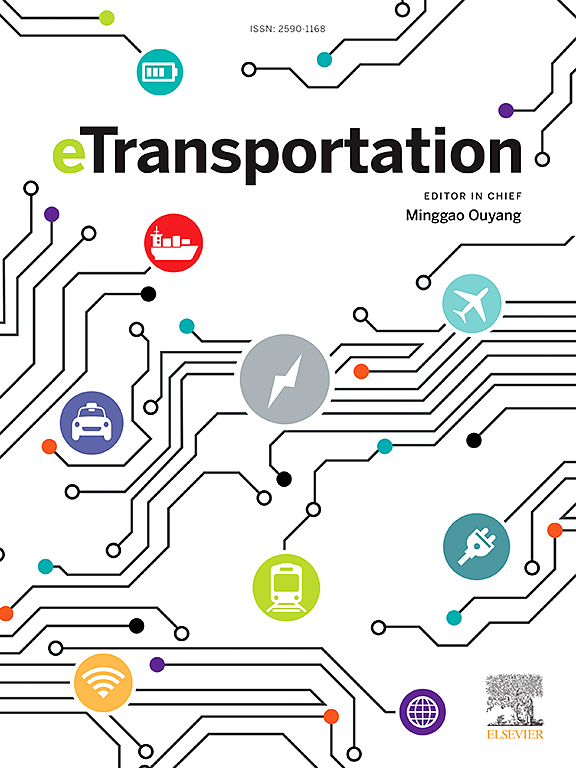Optimizing vehicle-to-grid systems: Smart integration of shared autonomous and conventional electric vehicles
IF 17
1区 工程技术
Q1 ENERGY & FUELS
引用次数: 0
Abstract
The electrification of transportation, driven by environmental concerns, has given rise to shared autonomous electric vehicles (SAEVs). Integrating SAEVs with Vehicle-to-Grid (V2G) technology, enhances grid stability and energy management. Unlike privately owned electric vehicles (EVs), SAEVs are managed by fleet operators who ensures that the vehicles are strategically positioned to meet immediate transport demands and longer-duration charging and V2G operations. This paper highlights key distinctions between EVs and SAEVs in V2G systems and offers a detailed analysis of SAEVs' unique features that enhance their role in V2G integration. Their coordinated fleet dispatch minimizes idle time, maximizes V2G participation, and ensures optimal energy distribution more effectively than conventional EVs. However, SAEVs pose greater operational challenges due to connectivity, reliance on public charging hubs, and the need to balance transport services with grid participation, while EV participation in V2G is highly dependent on user willingness. This study reviews control strategies and optimization frameworks for managing EV and SAEV charging and discharging, addressing key objectives, constraints, and uncertainties while highlighting their differing requirements and interdependencies. It further examines the benefits, challenges, and mitigation strategies for V2G integration, providing key recommendations for future research and development in this sector.

优化车辆到电网系统:共享自动驾驶汽车和传统电动汽车的智能集成
在环境问题的推动下,交通运输的电气化催生了共享自动驾驶电动汽车(saev)。将自动驾驶汽车与车辆到电网(V2G)技术相结合,增强电网稳定性和能源管理。与私人拥有的电动汽车(ev)不同,自动驾驶汽车由车队运营商管理,他们确保车辆的战略定位能够满足即时运输需求、更长的充电时间和V2G运营。本文强调了V2G系统中电动汽车和自动驾驶汽车之间的主要区别,并详细分析了自动驾驶汽车在V2G集成中的独特功能。与传统电动汽车相比,他们的协调调度最大限度地减少了闲置时间,最大限度地提高了V2G的参与,并确保了最优的能源分配。然而,由于连接性、对公共充电中心的依赖以及平衡运输服务与电网参与的需求,自动驾驶汽车面临着更大的运营挑战,而电动汽车在V2G中的参与高度依赖于用户意愿。本研究回顾了管理电动汽车和自动驾驶汽车充放电的控制策略和优化框架,解决了关键目标、约束和不确定性,同时强调了它们的不同要求和相互依赖性。它进一步研究了V2G集成的好处、挑战和缓解策略,为该领域的未来研究和开发提供了关键建议。
本文章由计算机程序翻译,如有差异,请以英文原文为准。
求助全文
约1分钟内获得全文
求助全文
来源期刊

Etransportation
Engineering-Automotive Engineering
CiteScore
19.80
自引率
12.60%
发文量
57
审稿时长
39 days
期刊介绍:
eTransportation is a scholarly journal that aims to advance knowledge in the field of electric transportation. It focuses on all modes of transportation that utilize electricity as their primary source of energy, including electric vehicles, trains, ships, and aircraft. The journal covers all stages of research, development, and testing of new technologies, systems, and devices related to electrical transportation.
The journal welcomes the use of simulation and analysis tools at the system, transport, or device level. Its primary emphasis is on the study of the electrical and electronic aspects of transportation systems. However, it also considers research on mechanical parts or subsystems of vehicles if there is a clear interaction with electrical or electronic equipment.
Please note that this journal excludes other aspects such as sociological, political, regulatory, or environmental factors from its scope.
 求助内容:
求助内容: 应助结果提醒方式:
应助结果提醒方式:


